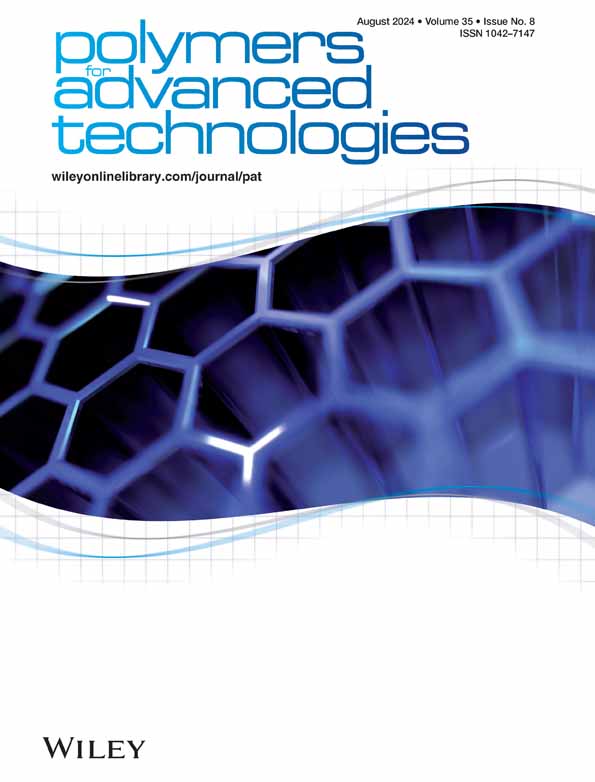基于支架的电纺丝用于乳腺癌研究的最新进展
IF 3.4
4区 工程技术
Q2 POLYMER SCIENCE
引用次数: 0
摘要
现代公共卫生面临的最大挑战之一是癌症的管理,这是一个全球性的健康问题。乳腺癌(BC)是全球妇女最常见的恶性肿瘤。最常用的癌症治疗方法包括放疗、化疗和手术。然而,化疗被认为是癌症发展到晚期和转移期的主要治疗方法。然而,由于对健康细胞的毒性、药物吸收差、药物难以到达肿瘤靶点以及疗效低等原因,传统的化疗方法往往不够理想。纳米技术通过电纺丝技术创造出具有独特性能的新材料,为克服其中一些局限性提供了可能。电纺丝是一种简单易行、价格合理的生物材料制造技术,可以复制细胞基质的形貌和结构。这些材料表面积大,可进行机械控制,纤维水平可从微米级调整到纳米级。这篇综述文章强调了电纺支架在治疗BC方面的潜力,同时也提供了对电纺程序和纳米结构纤维材料的基本了解。本文回顾了最近出现的用于治疗 BC 的电纺丝技术。首先,文章简要介绍了过去几年电纺丝在治疗巴氏癌研究中取得的进展。接下来,文章通过总结电纺丝过程中使用的技术和材料,对电纺丝进行了研究。此外,文章还展示了电纺丝三维(3D)模型对于诊断和治疗巴氏综合征的重要性。本文还阐明了电纺丝在细胞培养、药物输送、药物负载和基因治疗等多个领域的众多用途。最后一部分讨论了电纺丝在 BC 研究中的优势、局限性和可能遇到的挑战。本文章由计算机程序翻译,如有差异,请以英文原文为准。
Recent advances in scaffold based electrospun for breast cancer research
One of the biggest challenges facing public health in the modern era is the management of cancer, a global health issue. Breast cancer (BC) is the most common malignancy among women worldwide. Among the most popular cancer treatment modalities are radiation, chemotherapy, and surgery. Chemotherapy, however, is regarded as the primary treatment option for cancer that has progressed to the final and metastatic stages. However, because of things like toxicity to healthy cells, poor drug absorption, trouble getting drugs to target tumor sites, and low therapeutic efficacy, traditional chemotherapy approaches are frequently insufficient. Nanotechnology offers the potential to overcome some of these limitations by creating new materials with unique properties through electrospinning. A straightforward and reasonably priced technique for creating biomaterials that can replicate the topography and structure of the cellular matrix is electrospinning. These materials have a large surface area, can be mechanically controlled, and have a level of fibers that can be adjusted from micrometers to nanometers. This review article emphasizes the potential of electrospun scaffolds for the treatment of BC while also offering a basic understanding of the procedure and nanostructured fibrous materials. This article reviews the most recent emerging electrospinning techniques in BC therapy. First, it briefly introduces the progress made in electrospinning in BC research over the past few years. Next, it investigates electrospinning by summarizing the techniques and materials used in the process. In addition, it demonstrates how crucial electrospinning three‐dimensional (3D) models are for the diagnosis and treatment of BC. This article also clarifies numerous electrospinning uses in several fields, such as cell culture, drug delivery, drug loading, and gene therapy. The final section discusses the advantages, limitations, and challenges electrospinning is willing to encounter in BC research.
求助全文
通过发布文献求助,成功后即可免费获取论文全文。
去求助
来源期刊

Polymers for Advanced Technologies
工程技术-高分子科学
CiteScore
6.20
自引率
5.90%
发文量
337
审稿时长
2.1 months
期刊介绍:
Polymers for Advanced Technologies is published in response to recent significant changes in the patterns of materials research and development. Worldwide attention has been focused on the critical importance of materials in the creation of new devices and systems. It is now recognized that materials are often the limiting factor in bringing a new technical concept to fruition and that polymers are often the materials of choice in these demanding applications. A significant portion of the polymer research ongoing in the world is directly or indirectly related to the solution of complex, interdisciplinary problems whose successful resolution is necessary for achievement of broad system objectives.
Polymers for Advanced Technologies is focused to the interest of scientists and engineers from academia and industry who are participating in these new areas of polymer research and development. It is the intent of this journal to impact the polymer related advanced technologies to meet the challenge of the twenty-first century.
Polymers for Advanced Technologies aims at encouraging innovation, invention, imagination and creativity by providing a broad interdisciplinary platform for the presentation of new research and development concepts, theories and results which reflect the changing image and pace of modern polymer science and technology.
Polymers for Advanced Technologies aims at becoming the central organ of the new multi-disciplinary polymer oriented materials science of the highest scientific standards. It will publish original research papers on finished studies; communications limited to five typewritten pages plus three illustrations, containing experimental details; review articles of up to 40 pages; letters to the editor and book reviews. Review articles will normally be published by invitation. The Editor-in-Chief welcomes suggestions for reviews.
 求助内容:
求助内容: 应助结果提醒方式:
应助结果提醒方式:


